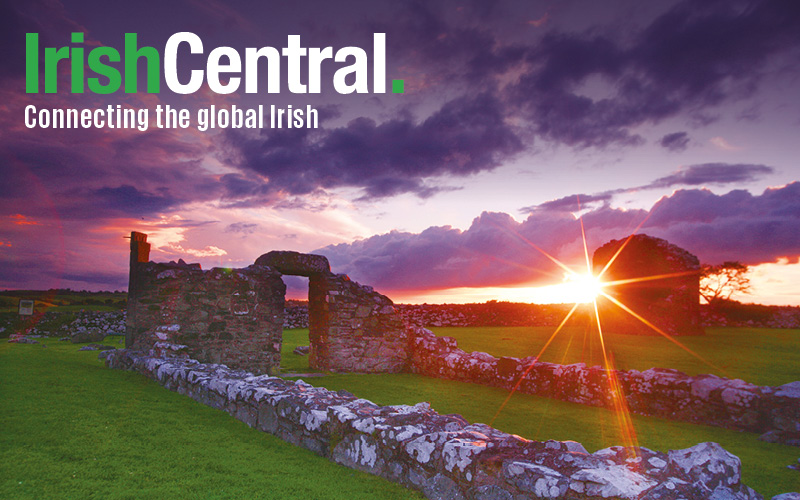PHOTOS - Life in "Dublin 1911" spelt out in photographs, advertisements and documents - slideshow
Each week in 1911 over 80 cross-channel sailings carried a tide of Irish emigrants from Dublin to Britain. Many of them were taking the first steps on a journey to their ultimate destination across the Atlantic. All of them they were leaving a country and a city that was unable to provide a basic living. Between 1891 and 1901 alone, 430,393 people – almost the equivalent of the capital’s then population – emigrated from Ireland and very often the lighthouses along Dublin’s coast was their last sight of Irish land.
These are some of the facts contained in Dublin 1911, an elegantly curated book by the Royal Irish Academy illustrating ordinary life in Ireland’s capital in a single year. Newspaper articles, advertisements and evocative photographs from the period are combined with short essays on topics such as emigration, religion, fashion and sport. Broken into calendar months, the volume chronicles the major events of the year – the visit of King George V and Queen Mary garnered most attention – and is edited by Catriona Crowe, Senior Archivist at the National Archives of Ireland.
Two of the chief – and interrelated – characteristics of Dublin at this time were endemic emigration and acute poverty. Over 26,000 families lived in inner city tenements and 20,000 of these lived in single-room dwellings. “These figures point to a city of great poverty,” says Ms Crowe. “People were getting the hell out of there because there were no jobs for them and because of the shockingly overcrowded living conditions: Dublin had worse slums in 1911 than Glasgow or London and the mortality rate was higher in Dublin than for either of those two cities.”
Familiar from the settings of Sean O’Casey plays like Juno and the Paycock and The Plough and the Stars, these harrowing conditions were largely a consequence of the exploitation of Famine refugees arriving from rural Ireland into Dublin in the late 1840s and early 1850s. “Slum landlords were able to subdivide the huge Georgian house into smaller dwellings and let them, in some cases, at quite exorbitant rents,” says Ms Crowe. “Of course, they failed to maintain them so there were a number of dreadful accidents of collapsing dwellings on Church St and Fenian St around the period of the book.”
Dublin 1911 was inspired by the National Archives of Ireland’s publication of the 1911 Irish census website, which included photographs from anthologies such as the National Library’s Lawrence Collection. “The site has been a huge success,” explains Ms Crowe. “I think it’s 600 million hits at this point in time and about 12 million unique visits. So it’s one of the most successful Irish cultural websites ever.” Developed in partnership with Library and Archives Canada, Ottawa, the 1911 census is completely digitised allowing for searches by occupation, religion and profession, for example, as well as by name and area.
Previously, knowing a family’s location was vital to tracing them in the census records. Tracking rural dwellers was easier as they tended to stay in the same townland for generations. “But if your ancestors lived in urban areas where people moved around a lot, it would’ve been almost impossible to find them if you didn’t know where they were,” she says. “Because you can now search by name, you can find people that until now could never have been located.”
PHOTOS - Life in "Dublin 1911" spelt out in photographs, advertisements and documents - slideshow
The National Archives has digitized both the 1911 and 1901 censuses and while making these records available on its website was a complex process, involving over nine million entries, the rewards have been significant.
“I’m personally delighted with the way that Irish people have taken the 1911 and 1901 censuses to their hearts,” says Ms. Crowe. “I’m a great advocate of history for the people. I love history to be de-mystified, made simple. For me, the greatest success of this is that primary source material and census returns are now completely understandable by any ordinary person who has the use of a computer.”
Ms Crowe hopes that Dublin 1911 will complement the census website by encouraging readers to go online and research their own families and communities. An upshot of publishing the census data is that it has helped remove the historical stigma of poverty.
“One of the interesting side effects is that people may have stopped feeling ashamed of having poor ancestry,” says Ms. Crowe. “Most of us in Ireland come from poor backgrounds, originally, but there was often great shame in discussing coming from the tenements or from a small rural dwelling and I think the census has done something to alleviate that. It has inspired people to look with a different eye at their ancestors who were heroically rearing large families in very difficult times.”
While the prevalence of issues like emigration, unemployment and economic mismanagement in the Dublin of 1911 ring with a strong contemporary resonance, smaller details dramatise a world unrecognisable from today’s city: most women had their clothes made for them and were catered for by over 3,000 dressmakers and 600 milliners, over one third of married women had seven or more children, most suburban Dubliners had at least one servant and Dublin’s traffic was dominated by bicycles, trams and the horse and cart.
Included in this stylish production – which is framed by arresting replicate census returns – is a letter published in the Irish Times of April 4 1911 skeptical about the need for a census. The writer suggests “it is open to the enquiring mind to ask what it has all been for?”. If nothing else, it supplied Dublin 1911 with a fertile canvas for this intimate portrait of Ireland’s capital city at the start of the last century and on the eve of radical change.
‘Dublin 1911’ is available from Amazon.
PHOTOS - Life in "Dublin 1911" spelt out in photographs, advertisements and documents - slideshow




Comments